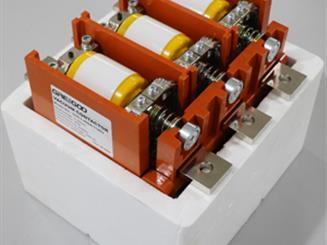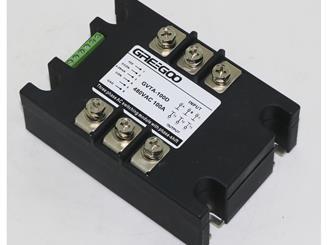What are the main difference between electrical holding and magnetic holding in vacuum contactor?
The main difference between electrical holding and magnetic holding in a vacuum contactor lies in how the contacts are held closed when the coil is de-energized. Both methods serve the purpose of keeping the contacts closed in the absence of current in the coil, but they use different principles to achieve this.
Electrical Holding:
- In vacuum contactor with electrical holding, a separate set of auxiliary contacts is used to maintain the closed position of the main power contacts.
- When the coil is energized, the main power contacts close and the electrical circuit is established. At the same time, the auxiliary contacts also close, creating a parallel electrical path that bypasses the coil.
- Once the coil is de-energized, the main power contacts remain closed due to the electrical current flowing through the parallel path created by the auxiliary contacts. This current maintains the magnetic force that holds the main contacts closed.
- Electrical holding provides a continuous holding force, and the main contacts will remain closed even if the coil loses power, as long as there is an external power supply to maintain the current flow through the auxiliary contacts.
Magnetic Holding:
- In vacuum contactors with magnetic holding, a permanent magnet is used in conjunction with the coil to maintain the closed position of the main power contacts.
- When the coil is energized, the main power contacts close and the electrical circuit is established. Simultaneously, the permanent magnet's magnetic field becomes active, creating an additional magnetic force that helps hold the main contacts closed.
- Once the coil is de-energized, the permanent magnet continues to exert a magnetic force on the main contacts, keeping them closed even without current flow through the coil.
- Magnetic holding does not require an external power supply to maintain the closed position of the main contacts, as it relies on the energy stored in the permanent magnet.
In summary, the main difference between electrical holding and magnetic holding in a vacuum contactor is the method used to maintain the closed position of the main power contacts when the coil is de-energized. Electrical holding uses an external electrical circuit to provide continuous holding force, while magnetic holding relies on the energy stored in a permanent magnet to maintain the closed position without an external power supply.

What is the difference between the magnetic latching type and electrical holding type vacuum contactor?
Vacuum contactors can be classified into two main types based on their mechanism for holding the contacts closed: magnetic latching type and electrical holding type.
Read More
What's the difference between phase control Thyristor Module and Rectifier Diode Module?
Thyristor modules are used for controlled switching and power regulation, while rectifier diode modules are employed for converting AC to DC in rectification applications.
Read More
Difference Between Stud-Type and Capsule-Type Phase-Controlled Thyristors (PCT)
Capsule-type is better suited for higher power and more demanding heat dissipation requirements, while Stud-type is more appropriate for medium power applications with simpler installation needs.
Read More
How to Choose Single-Phase or Three-Phase Thyristor Power Controllers: A Comprehensive Guide to Key Factors
Learn how to choose single-phase or three-phase thyristor power controllers. Explore key factors, applications, and benefits with Greegoo’s expert guide
Read More













